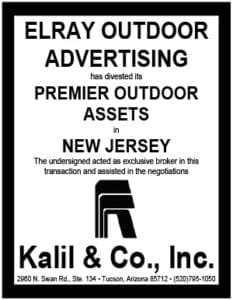 I talked yesterday about natural disasters and how their occurrence reminds us that billboards and other forms of out of home advertising can become vulnerable. Whether your structure is conforming or nonconforming is important to know. So what do you do in the event you have damaged nonconforming structures?
I talked yesterday about natural disasters and how their occurrence reminds us that billboards and other forms of out of home advertising can become vulnerable. Whether your structure is conforming or nonconforming is important to know. So what do you do in the event you have damaged nonconforming structures?
Most sign, zoning, or other land use regulations prohibit expanding or exacerbating the nonconformity, such as increasing the height or size of a sign that is already too tall or large. Such regulations also usually contain provisions for eventually terminating nonconforming uses or structures. One such means, for example, is to prohibit the repair of nonconforming uses and structures that have been “substantially damaged.” Thus, if the nonconforming sign was substantially damaged in a hurricane, it could only be repaired in compliance with the current height, size, and other regulations applicable to the sign. As part of the repairs, therefore, the sign would have to be lowered or downsized, if the regulations passed since construction of the sign imposed such height and size restrictions. In fact, the sign would have to be completely removed if the current regulations prohibited the type of the sign, such as those mounted on poles, or the use of the sign, such as for off-premise advertising.
Sign ordinances are required to contain sufficient definitions, guidelines, or other objective tests to determine when the sign damage is “substantial,” so that the sign owners are given fair and reasonable notice of what repairs are permitted or prohibited. Most jurisdictions have met this constitutional requirement for due process and specificity in their regulations by employing a test for determining the extent of sign damage and eligibility for repair, such as comparing the cost of repairing the damage with the cost of rebuilding the sign. For example, Section 4605(e)(3) of the Houston Sign Code states that, if the cost of repairing the damaged sign exceeds 60% of the cost to rebuild it, then the sign will be permitted for repair only if it complies with the current height, size, and other limitations in the Code. Thus, if the sign was originally built at a height of 70 feet, and the cost of repairing it was 61% or more of the cost of rebuilding it, the sign would have to be lowered to the permitted height of 42½ feet when the repairs were conducted. By contrast, if the cost to repair the damage was only 59% of the cost to rebuild it, the repairs could be undertaken and the sign could remain at the nonconforming height of 70 feet.
Each regulatory authority has different procedures for implementing their test for determining when nonconforming signs are eligible for repair. For example, the Houston Sign Administration requires the sign owner to submit two bids from licensed sign contractors comparing the cost to repair and rebuild the damaged sign. An official from the Houston Sign Administration will then inspect the sign and analyze the estimates, and the Department will then issue or deny repair permits in accordance with its assessment of the extent of the damage. The sign owner may appeal the denial of the repair permit application or other adverse decisions to the Houston General Appeals Board.
Once again, the particular regulations of the jurisdiction in which the damaged sign is located should be reviewed in order to determine the exact procedures for repairing the sign. The sign owner should also consult with the responsible sign officials and/or competent legal counsel, to fully familiarize himself with the interpretations and ramifications of the regulations in each specific instance.
[wpforms id=”9787″]
Paid Advertisement

















